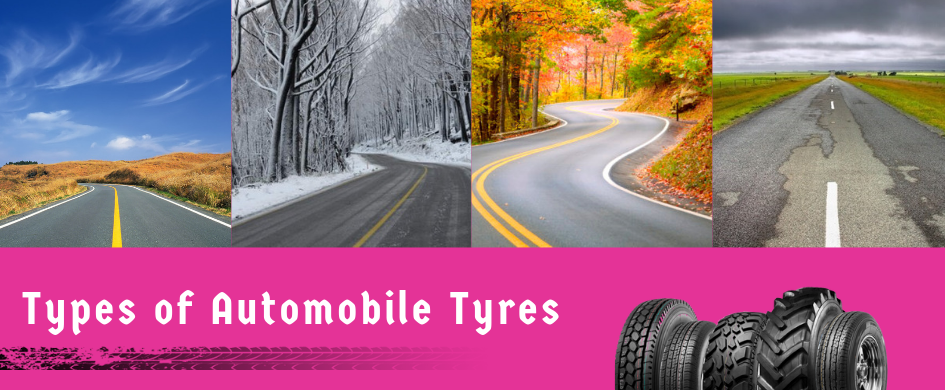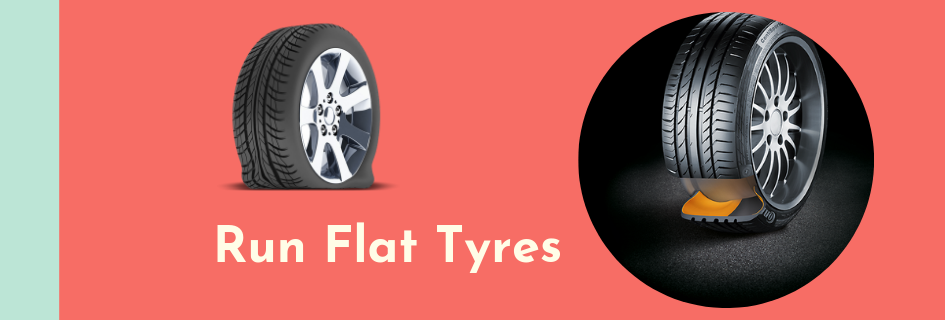The tyre is not a mere air-filled rubber ring, but it’s an intricate piece of engineering that is available in many shapes and sizes and is built to take on countless challenges. The rubber compound and the tread pattern are the two crucial areas where one type is identifiable from another. Consequently, these are decided by the environment and conditions where the tyres are in use. As far as you choose the right tyre technology, you’re guaranteed that the wheels of your car or 4×4 will have enhanced grip and handling. Let’s glance at the varied tyre types available on the market and the precise benefits they can provide to your vehicle.
1) All-Season Tyres
An all-season tyre is a combination of both summer and winter tyres, which are ideal for your vehicle if you live in an area that has a moderate climate in both winters and summers or live in a city area where the roads are kept neat and clean, and you’re driving less than 10,000 km a year. Remember, an all-season tyre can only provide a solution, simply offering a blend of summer and winter features for those drivers who don’t foresee dealing with intense weather conditions.
2) 4×4 Truck Tyres
4×4 Truck tyres have a more broadly spaced tread design than normal tyres – mainly a bigger tread block and profound tyre grooves. Standard tyres perform badly on surfaces like the muddy ground, as the tread swiftly fills with mud and the wheel starts to spin pointlessly, poking the tyre deeper and deeper into a hole. Conversely, 4×4 truck tyres have a better grip on tough terrains like grass, mud and sand without the tread area becoming choked.
3) Run-Flat Tyres
Since the arrival of the pneumatic tyre or the switch from bias-ply to radial tyres, run-flat tyres are one of the biggest breakthroughs in the automotive industry. Why is it ground-breaking? Well, if there is a sudden dip in the tyre pressure or in the occurrence of a puncture, a run-flat tyre will remain totally functioning until the driver is able to steer it safely to the nearby garage or home. The practicality of a run-flat tyre is supplied by broad and strong reinforced sidewalls so that they can be driven on provisionally even after a puncture. Normally, you should be able to travel up to 70 km on a punctured run-flat tyre. However, bear in mind that they’re not repairable and you ought to change it with a brand new tyre at the earliest.
4) Summer Tyres
Summer tyres have a dedicated rubber compound that renders exceptional handling and traction on both wet and dry roads in warmer conditions. Moreover, they have lower rolling resistance, better fuel efficiency and produce less of road noise. With fewer grooves for water clearance, optimising the contact area with the road, the tread model on a summer tyre is smoother than a winter tyre. Thus, the vehicle has enhanced braking and grip during the summer months.
5) Winter Tyres
Winter tyres offer exceptional traction on wet road surfaces in cold conditions. The tread compound of a winter tyre holds more of natural rubber, so it doesn’t solidify when the temperature dips below 7 degrees Celsius. When braking, it stays supple and agile in colder climates to decrease the stopping distance. Moreover, the winter tyre has a lot of sipes, which are fantastic for clearing water and mud from the path of the vehicle and lessening the threat of aquaplaning.
Read this article: Tips for Driving in Winter
Final Words
Different types of tyres are made for different road and weather conditions. All-season tyres blend features of both summer and winter tyres into a hybrid solution with the advantages of both. 4×4 Tyres have enhanced traction on rough surfaces like grass and mud without the tread area becoming congested. Summer tyres have a staunch rubber compound that renders fantastic grip and handling on both wet and dry roads in warmer conditions, whereas, winter tyres offer exceptional grip on wet road surfaces in cold conditions.







